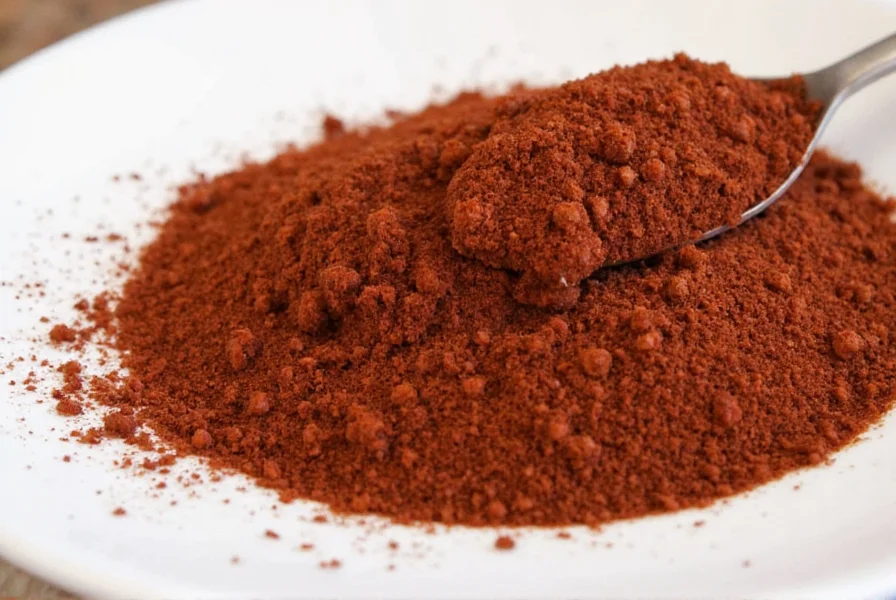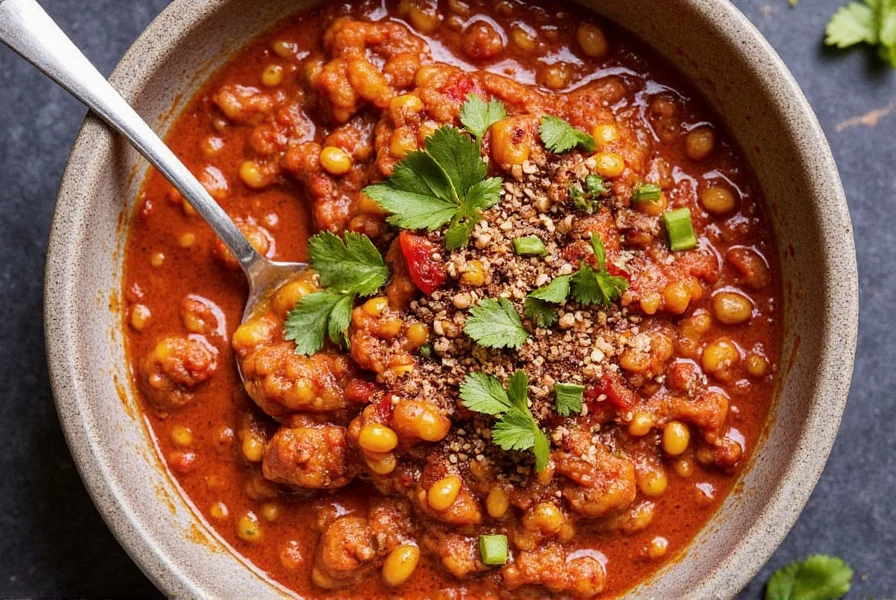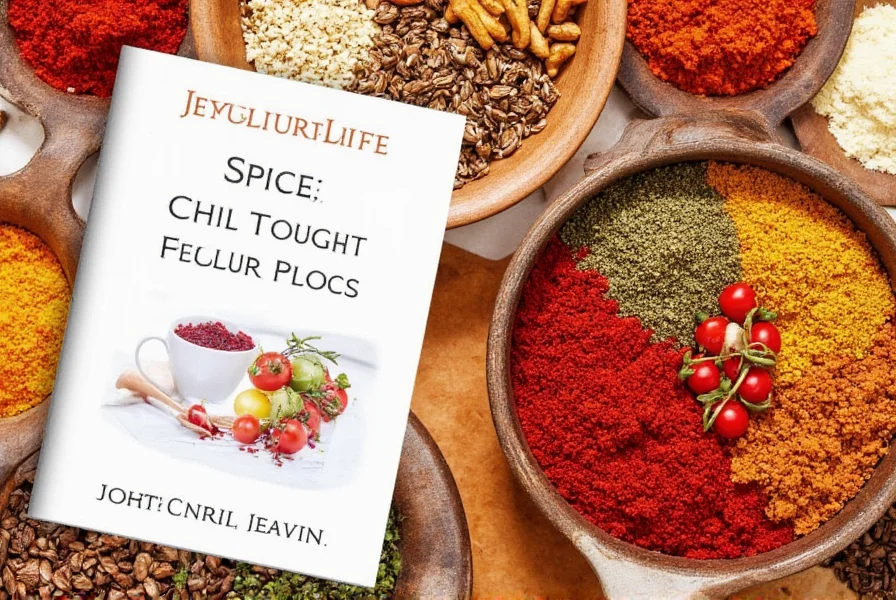Spices are the secret to a truly unforgettable chili. While meat and beans form the base, it's the right blend of spices that creates depth, balance, and complexity. In this guide, we'll cover the top 10 essential spices for chili, including how to use them, expert blending techniques, and trusted brand recommendations to elevate your dish from good to great.
Here's a quick overview of the top spices you need for perfect chili:
| Spice | Flavor Profile | Heat Level | Main Benefit |
|---|---|---|---|
| Cumin | Earthy, nutty, smoky | Mild | Adds warmth and depth |
| Paprika | Sweet, peppery, slightly fruity | Very mild to medium | Enhances color and sweetness |
| Chili Powder | Spicy, earthy, tangy | Medium | Core spice for authentic chili |
| Oregano | Bitter, herbal, robust | Mild | Adds herbal backbone |
| Cayenne Pepper | Fiery hot, sharp | Hot (8/10) | Boosts heat quickly |
| Garlic Powder | Pungent, savory, aromatic | Mild | Builds umami foundation |
| Onion Powder | Savory, sweet | Mild | Enhances meatiness |
| Coriander | Floral, citrusy, warm | Mild | Complements other spices |
| Ancho Chili Powder | Fruity, smoky, mild heat | Medium | Rich base layer of flavor |
| Chipotle Powder | Smoky, spicy, bold | Medium-hot | Adds campfire-like depth |
How to Use These Spices Like a Pro

Now that you've got your list, here's how to actually use these spices to build flavor step-by-step:
- Toast dry spices first: Lightly toast cumin, coriander, and chili powder in a pan before adding to the pot. This unlocks more flavor!
- Bloom them in oil: Add ground spices early in cooking to allow them to bloom in oil. This helps distribute flavor evenly.
- Layer with aromatics: Cook garlic and onion powders after the fats but before adding liquids to build depth.
- Adjust heat gradually: Add cayenne or chipotle last if you want more heat—you can always add more, but you can't take it out!
- Taste and adjust: Let your chili rest overnight. The flavors meld beautifully, and you might find you need less salt or more spice.
Taste Test: Mild vs. Bold Chili Flavor Profiles

To show you the power of spice, we prepared two batches of chili using different spice profiles:
| Type | Spice Blend Used | Taste Notes | Best For |
|---|---|---|---|
| Mild & Comforting | Paprika, cumin, oregano, onion powder | Sweet, balanced, family-friendly | Kids, spice-sensitive adults |
| Bold & Smoky | Ancho chili, chipotle, cayenne, garlic powder | Smoky, intense, full-bodied | Experienced eaters, heat lovers |
Buying Guide: How to Choose the Best Spices for Chili
Not all spices are created equal. Here's how to choose high-quality options that will elevate your chili game:
- Check the packaging date: Freshness matters! Look for spices that have a "best by" or "packed on" date within the past 6–12 months.
- Avoid generic blends labeled 'chili seasoning': Many store-bought mixes contain fillers like flour or cornstarch. Opt for pure, single-ingredient spices instead.
- Grind quality matters: Finely ground spices release more flavor. If you're adventurous, try grinding whole seeds yourself for maximum potency.
- Organic vs. conventional: Organic spices often taste cleaner and are free from chemical additives. Not required, but a nice bonus if available.
- Brand reputation: Stick to well-reviewed brands like McCormick, Frontier Co-op, Spice Islands, or Penzeys for reliable quality.
| Product | Features | Advantages | Use Case |
|---|---|---|---|
| McCormick Ground Cumin | Freshly ground, pure spice, resealable container | Consistent flavor, widely available | Daily cooking, chili bases |
| Frontier Co-op Ancho Chili Powder | Organic, fair-trade, deep red color | Natural sweetness, rich depth | Slow-cooked recipes, vegetarian chili |
| Penzeys Chipotle in Adobo Powder | Smoky, bold, no preservatives | Real fire-roasted flavor | Meat-based chili, BBQ dishes |
| Spice Islands Garlic Powder | Strong aroma, fine texture | Perfect for building savory layers | Any chili, especially ground beef versions |
| La Flor Chile Guajillo | Whole dried chilies, traditional Mexican use | Unique flavor, versatile for grinding | Authentic Mexican chili, salsas |
Final Thoughts & Recipe Tips

Spices are the soul of any great chili. With a thoughtful mix of warm, smoky, spicy, and herbal notes, you can transform your kitchen into a flavor factory. Remember, there's no one-size-fits-all when it comes to chili spice blends. Experiment, adjust, and make it your own.
Here are a few final tips to keep in mind:
- Make extra: Chili tastes better the next day!
- Try a vegan version: Swap meat for jackfruit, lentils, or mushrooms.
- Store properly: Keep spices in cool, dark places to preserve freshness.
- Label your spice blends: Create your own custom mixtures and label them for future use.
Whether you're feeding a crowd, prepping for game night, or just craving something cozy on a chilly evening, now you have all the tools to make the best chili of your life. Happy cooking!
Frequently Asked Questions About Spices for Chili
What's the difference between chili powder and chili flakes?
Chili powder is a blend of ground dried chilies and other spices (like cumin, garlic powder, and oregano), while chili flakes are simply dried, crushed chilies. Chili powder provides complex flavor with moderate heat, while flakes deliver more direct heat and texture. For authentic chili, use a combination of both for layered heat.
How can I fix chili that's too spicy?
Add dairy (like sour cream or yogurt), acidic elements (lime juice or vinegar), or sweet components (a pinch of sugar or honey) to counterbalance excessive heat. You can also dilute with extra beans, tomatoes, or broth. Remember: never add more heat to a dish that's already too spicy!
Can I substitute fresh spices for dried in chili?
Yes, but adjust quantities: use three times the amount of fresh herbs compared to dried (e.g., 1 tbsp dried oregano = 3 tbsp fresh). Fresh spices work best added toward the end of cooking, while dried spices should be bloomed early for maximum flavor extraction.
How long do spices for chili stay fresh?
Whole spices last 2-3 years, while ground spices remain potent for 6-12 months. Store them in airtight containers away from light and heat. Test freshness by rubbing a small amount between your fingers—if the aroma is weak, it's time to replace them.
What's the secret to restaurant-quality chili flavor?
Toast your spices before adding liquids, layer heat sources (ancho for depth + cayenne for kick), and let it rest overnight. Professional kitchens also often add a splash of beer or coffee to enhance complexity. The real secret? Using fresh, high-quality spices rather than old, stale ones from the back of your cupboard.
Can I make authentic chili without traditional chili spices?
While possible, it won't taste like traditional chili. The spice blend defines the dish. If you're missing key ingredients, focus on building depth with alternatives: smoked paprika for smokiness, black pepper for heat, and cocoa powder for earthiness. But for true chili flavor, the core spices (cumin, chili powder, garlic) are essential.











 浙公网安备
33010002000092号
浙公网安备
33010002000092号 浙B2-20120091-4
浙B2-20120091-4